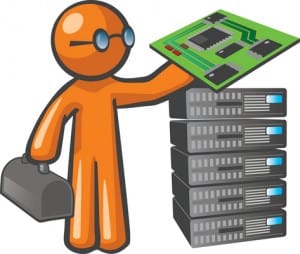
One of the newest business technologies is “the cloud” that more and more people are using. It’s an elusive term that is difficult to pin down, and it is precisely that vagueness that inspires fear in those who are considering transferring sensitive business data to it.
The cloud, however, isn’t as mystifying as you may think, and, if you use an online data drive or social media, you are already using it. Simply put, the cloud consists of networks of servers worldwide that are capable of storing information.
The primary benefit of using the cloud for business is that it eliminates the cost and hassle of purchasing and maintaining a physical server. Also, employees don’t have to waste time downloading and running applications and programs when they can pluck what they need from the cloud and virtually put it back when they are done. While this all sounds well and good, the question remains, “Is business data safe in the cloud?”


 Just purchasing a network firewall will not stop an attacker from walking into your organization and physically plugging his computer into your network.
Just purchasing a network firewall will not stop an attacker from walking into your organization and physically plugging his computer into your network.
 Before purchasing any security device, it’s best to consult with a security professional. Have penetration tests performed and a vulnerability assessment report generated.
Before purchasing any security device, it’s best to consult with a security professional. Have penetration tests performed and a vulnerability assessment report generated.
 That way, if your data is comprised either through internal access or external, it will become very difficult to use the data that was stolen.
That way, if your data is comprised either through internal access or external, it will become very difficult to use the data that was stolen. Together, they offer deep context to inform the security team of the appropriate response to potential threats and real attacks.
Together, they offer deep context to inform the security team of the appropriate response to potential threats and real attacks. As a result, even if an organization has made an effort to improve a system’s security, a user doing work on a personal computer has the ability to disable and circumvent protections and has the privileges to allow for the installation of malware.
As a result, even if an organization has made an effort to improve a system’s security, a user doing work on a personal computer has the ability to disable and circumvent protections and has the privileges to allow for the installation of malware.